First, we established baseline holding capacities for the 2-pound anchors by pull testing each anchor after letting it settle into the bottom for 10 minutes and setting with a steady pull. These matched several rounds of prior test data in the same area. We then walked them back and forth through 30, 60, and 120 degree arcs every two minutes, maintaining reasonably even tension. We pulled just hard enough to make the anchor rotate, never exceeding the setting force. After 6 cycles, we recorded the force required to make the anchor rotate and walk forward. All testing, including on-boat testing was done using a 15:1 scope to eliminate lift as a variable. 2-pound anchor testing was done with no chain and on-boat testing was done with 15 feet of chain.
- In a straight line, the Mantus anchor digs straight and deep into the soft sand bottom.
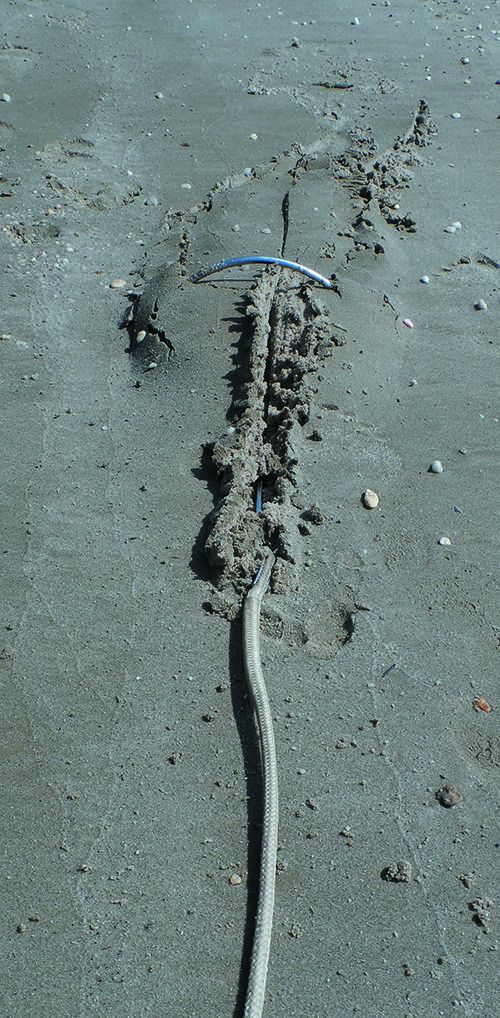
- As the direction of pull changes the anchor shuffles and the anchor stays near the surface. With every yaw cycle the anchor moves forward a fluke-length, slowly walking downwind towards potential trouble.
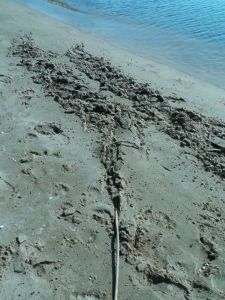
- In a straight line, the Fortress Guardian anchor digs straight and deep.
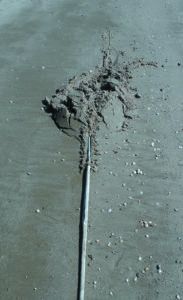
- The Guardian anchor takes longer to reset after each “shuffle” in a new direction.
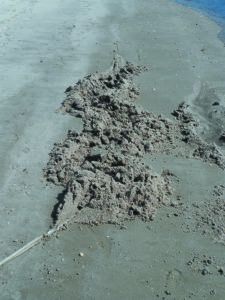
- In moderate winds with a steady pull the Guardian resets well, but if the strain is to light or the bottom is too hard, it can break out of the bottom.
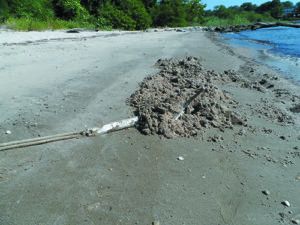
- If the anchor becomes partially disengaged it may never reset (notice the long drag mark).
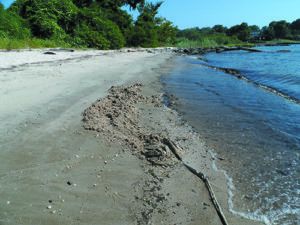
Related posts: Yawing and Anchor Holding

































I don’t think anchor tests in even wet sand are relevant to real world anchoring in water. The water fills the area between The particular of sand creating much more suction than just plain sand.
Interesting question & methodology.
Have a look at Steve Goodwin’s more recent SV Panope underwater anchor testing for 180 degree veer testing. Very illuminating and more definitive IMO.
http://www.youtube.com/watch?v=wKAt4vt74kM
-evan
My 1979 Cal31 has always “sailed” at anchor more than I was comfortable with. I’ve lately been experimenting with hanging a kettlebell off the stern to slow the motion down.
My Beneteau Oceanis 321 weighs 9,800 lbs. It has a bow roller. It is equipped with the following.
– Lewmar Delta galvanized Fast-Set plow anchor. It is 22 pounds.
– 20 feet of 5/16″ of pre-cut galvanized anchor chain with a large end for the shackle from West Marine
– 200 feet of 1/2″ premium prespliced three-stand anchor line with a galvanized steel shackle from West Marine
– Kong stainless steel anchor swivel connector
– Stainless steel screw pin bow-shape anchor shackle that is moused with seizing wire
– Anchor rode markers from West Marine
We anchor in hard sand, mud, and clay in Lake Erie. We set our anchor with 10:1 or more scope for overnight stays. Zero problems in winds up to 30 knots and 2 foot waves. It has never dragged.